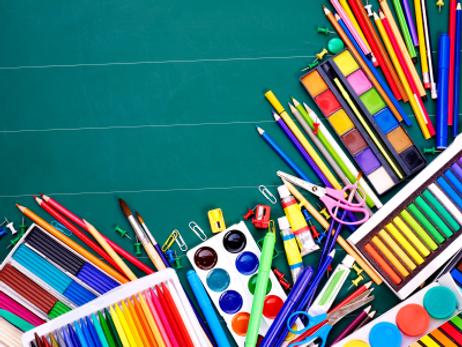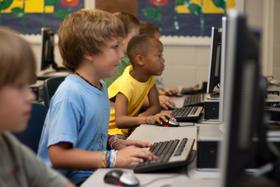As kids and parents get ready for the back-to-school flurry, it doesn’t appear pocketbooks will open up quite as much as last year. According to three different national surveys, parents are planning to pare back on school spending this year, although the specific amount varies somewhat. As kids lament the end of their summer vacations, parents are on the hunt for ways to save as they equip their kids for their new classroom experiences.
Spending Expectations from National Retail Federation
The predicts spending for back-to-school to be significantly more per family than it was last year. This time last year, the average family in the United States spent $688 on school supplies, clothing, shoes, and backpacks to send the kids back to school in style. This year, that number is expected to be closer to $634.
The NRF predicts overall back-to-school and off-to-college spending will total $72.5 billion. The majority of that will come from college costs, while back-to-school spending should total around $26.7 billion of that larger number. The average family sending a child to college is expected to spend around $836, as opposed to $907 that was spent last year.
“The good news is that consumers are spending, but they are doing so with cost and practicality in mind,” Matthew Shay, president, and CEO of the National Retail Federation stated on the organization’s website. “Having splurged on their growing children’s needs last year, parents will ask their kids to reuse what they can for the upcoming school season,” Shay added.
Reusing supplies is just one way parents will plan to save a few bucks on back-to-school spending this year. The NRF also found that parents are shopping for supplies early this season, to nab the best selection and the lowest possible prices. More families are also turning to the Internet to make the shopping experience cheaper and more convenient.
reports that families will also try to save some money by clipping coupons, scouring weekly flyers for sales, and putting off purchases of non-essentials until later in the season.
“This year, 44 percent of parents told me they’re trying to do as little back-to-school shopping as possible and will try to finish up during the Christmas season,” C. Britt Brenner, chief executive for America’s Research Group Ltd., told Cleveland.com. “Last year, 38 percent of parents said that, so it keeps getting bigger every year.”
This video from the National Retail Federation discusses sales expectations.
Deloitte Survey Finds Families Sticking to “Basic Needs”
Another survey conducted by found that families this year tend to stick with the basic needs of their kids, rather than splurging on many extras. More than half (57 percent) said they plan to stick with the needs list, as opposed to 52 percent last school year. In addition, the number of families that said they plan to reuse items from last year increased from 20 percent to 35 percent this year.
There were a number of reasons families cited for their cutbacks this year on the Deloitte survey, including:
- Higher prices (57 percent)
- More expensive items on the “needs” list (42 percent)
- Parents paying more due to school cutbacks (25 percent)
Despite the fact that parents said they are more confident of the state of the economy this year than they were last, many also said they would forgo purchases for themselves, for now, to ensure their children were fully equipped for the new school year.
Bank Releases Backpack Index
Cleveland.com also reports on the latest results on the annual Backpack Index released by Huntington National Bank. The 2019 index shows that parents can expect to pay
- $1,017 for elementary school supplies, extracurricular fees and technology
- $1,277 for middle school supplies, extracurricular fees and technology
- $1,668 for high school supplies, extracurricular fees and technology
Those numbers reflect more than simple school supplies like pencils and paper. They also include fees for instrument rental, sports and field trips, and study guides for college entrance examinations. What those numbers do not include is clothing, shoes, and electronic devices like laptops or tablets.
Buying Early, Paying in Cash
The National Retail Federation also found that families will begin shopping earlier this year, in an effort to save more money on back-to-school shopping. Nearly one-quarter, 23.9 percent, of families, said they would hit the stores two months prior to the start of school, which is an increase from the 22.3 percent that made it out early last year. Another half of families said they would begin their shopping one month to three weeks before the first school day.
David Suchka, a store manager of a Sears store in Richmond Town Square in Ohio, told Cleveland.com that his store is also seeing more customers pay in cash this season. Suchka also says more customers have been using store coupons and the Sears layaway plan to make back-to-school purchases.
This video discusses the cost of back to school supplies.
Cleveland.com also found that more parents plan to spend more on shoes than clothing to get their kids started on the new school year. This year, more than one-fourth of parents said they would invest their hard-earned dollars into shoes rather than the latest styles in clothing because they didn’t want to send their kids to school in shoes that were too small.
Although back-to-school spending habits are tighter this year than they were last, they are still much higher than in previous years and throughout the recent economic slowdown.
Questions? Contact us on Facebook. @publicschoolreview














